Damaged Desert
One Comment
I saw a few cactus blooms from the trail in Guadalupe National Park. Although they were less than a hundred yards away, it took me more than 15 minutes to reach them, because of thorny plants covering the slope. Returning with plenty of scratches, I decided that I’d put more effort into photographing desert plants in Carslbad Caverns, and especially Big Bend. Little did I know that my search for the desert flower would be fruitless, as the desert turned out to be deeply damaged.
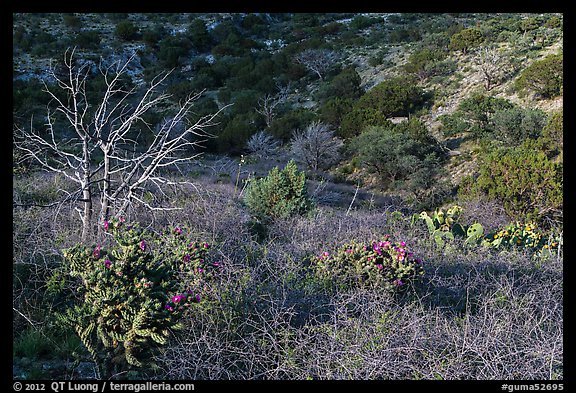
Like most, during my two previous visits to Carlsbad Caverns, I had spent almost all of my time inside the cave, as there is so much to see under the ground, while the gently undulating terrain above the ground did not look remarkable at first glance. This time, I was going to have a closer look, since this was an aspect of the park that I thought was overlooked.
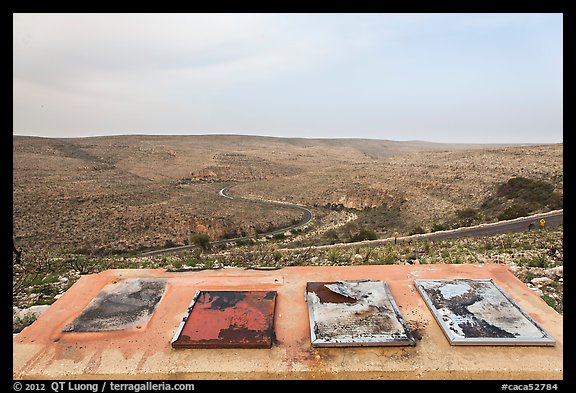
While driving the entrance road, even without stopping – there are few pull-outs -, I noticed the slopes of Walnut Canyon looked quite dead. On the first short hike I took, I realized that most of the terrain had burned.
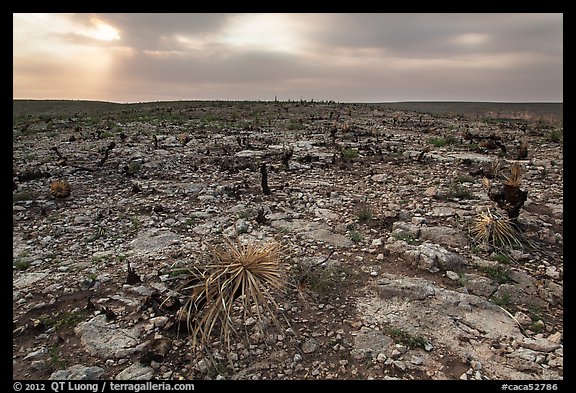
Despite appearances, desert vegetation provide a lot of fuel. I learned later that the fire took place just one year earlier, in June 2011, and that it had burned 30,000 acres, more than the total area of some National Parks.
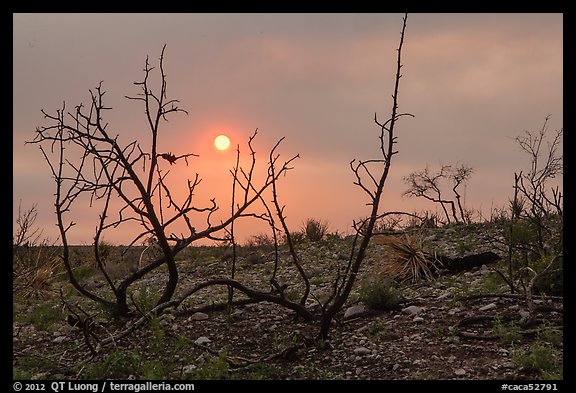
By coincidence, on that evening, another wildfire raged in the state. Although it blazed in an opposite corner of the state, the smoke obscured the sky, creating an eerie glow long before sunset time.
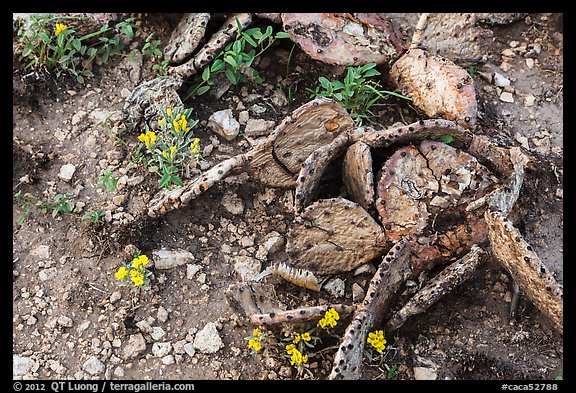
However, amongst the devastation, life was coming back quickly, in the form of new spring blooms from annuals.
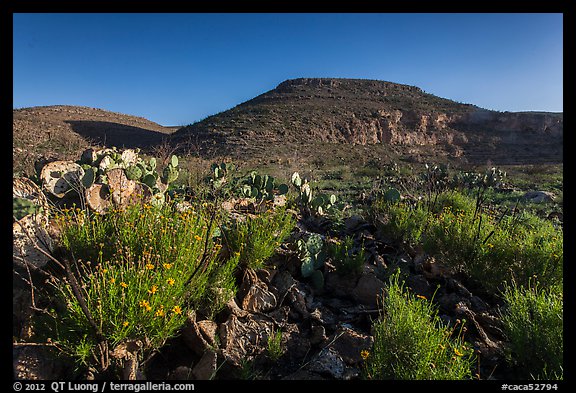
The next day, was a new beginning, as the air was crystal clear. I eventually found some pockets of vegetation that had been spared by the fire. I then drove towards Big Bend, where I had high hopes for photographing desert vegetation, but my rental car began to make strange noises. I insisted on having it replaced, as I didn’t want a break-down in the remote Big Bend. It took me an entire half-day, so I arrived there only the following day.
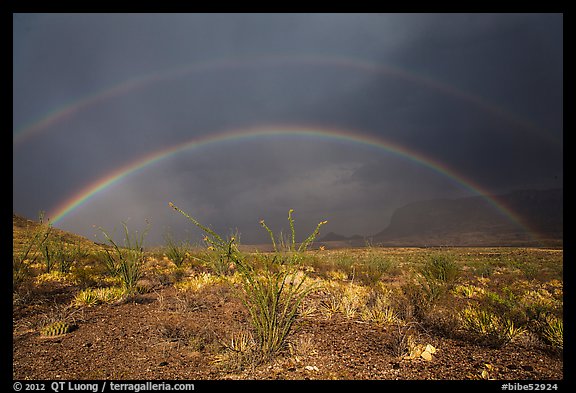
Big Bend is one of the most diverse deserts in North America, at the convergence of the Great Basin Desert and the Chihuahuan Desert. Late May is normally a good time to see cactus blooms, which emerge only in the warmer months.
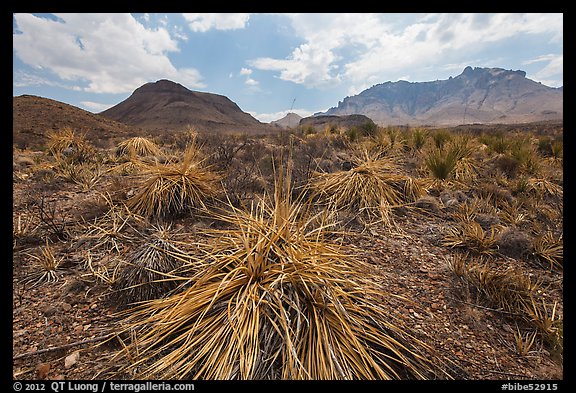
However, the desert just didn’t have its usual beauty. I looked for a nice agave to use as a foreground the next sunrise, but to my surprise couldn’t find any. Most yuccas were yellowed. At first, I didn’t make photographs, but then I felt I had to bear witness to all the different moods of nature, regardless of how un-attractive they are.
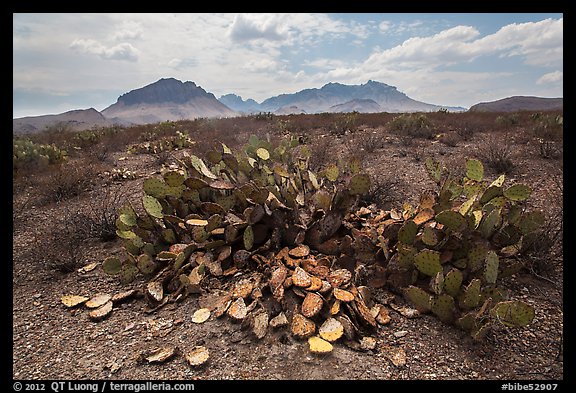
While looking for cactus blooms, I saw mostly dessicated plants. I assumed that the area must be suffering a prolonged drought, since those desert species are supremely hardy. The nearly indestructible plants such as creosote bush, lechuguilla, and cactus, were succumbing in large numbers.
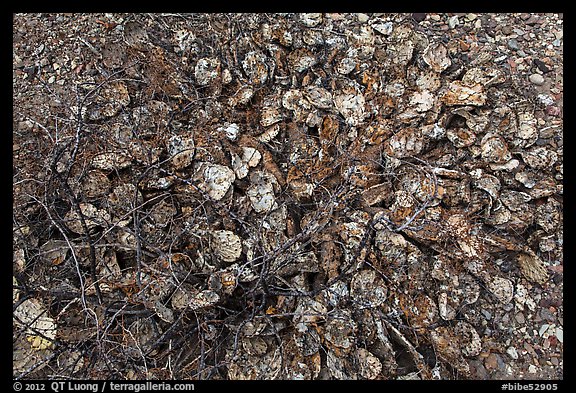
The rangers confirmed to me that during 2011, only 2.5 inches of rain fell, less than a fifth of normal precipitation. Although less severe, the drought has continued through 2012. It has also contributed to the fire that devastated Carlsbad Caverns, by increasing the amount of dry timber.
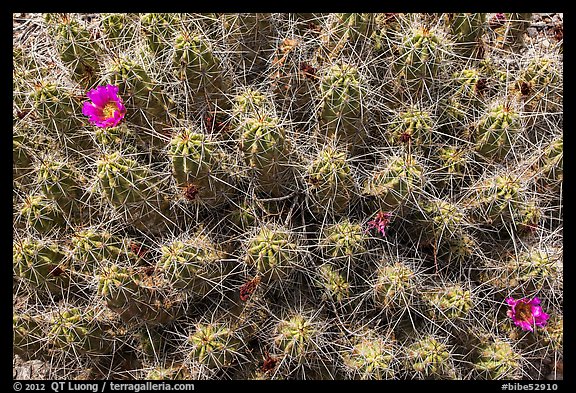
Although I remembered clusters of dense and colored blooms all over the place from my 1997 visit, this year it took me a long time just to find a cactus with two meager blooms. If you are planning a spring trip to Big Bend, be sure to inquire about conditions. I don’t know if the Big Bend desert will eventually recover, but from what I’ve seen, I think that scars are going to remain for a long time, especially since vegetation mortality often leads to increased erosion and soil loss. Are we seeing there yet another manifestation of climate change ?
Part 4 of 5: 1 | 2 | 3 | 4 | 5


Next time you’re up, I would love to give you a tour of our “damaged meadows” – this is something I’ve been paying attention to and am finally starting to understand the story of Yosemite meadows. Too much to write in a blog comment, but hopefully we’ll have a chance to take a walk in a meadow before I forget it all!